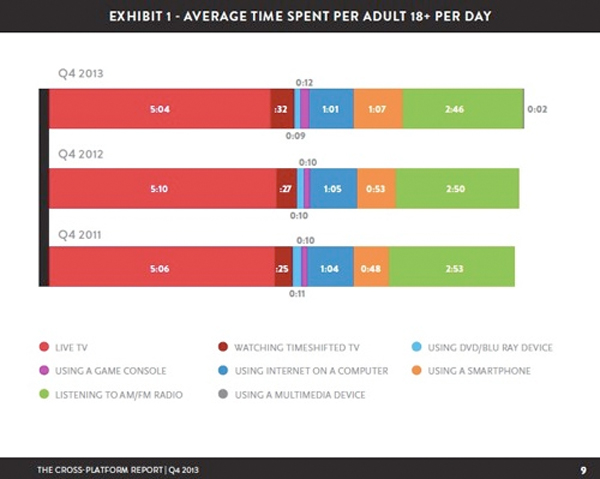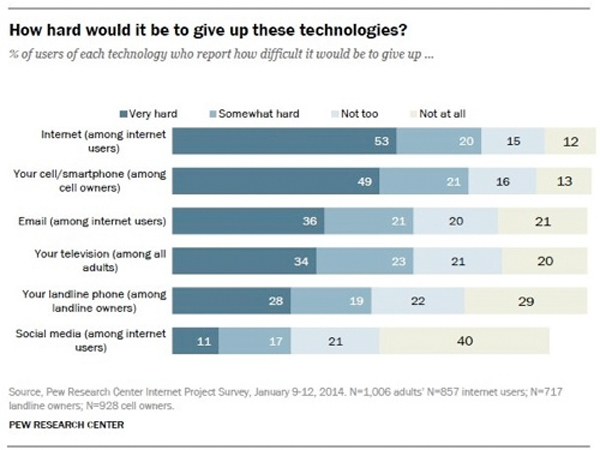Do TV & Radio stand a chance in the advertising game?
March 10, 2015
 By Daniel McCarthy / The McCarthy Group
By Daniel McCarthy / The McCarthy Group
Can TV and radio stay relevant as advertising platforms in the face of the intense relationship consumers have with their digital devices?
Most forecasts believe so, but we think it’s an open question after reviewing the conclusions of two different research studies that were recently released.
Pew Research last week released the first of a series of papers that celebrates the 25th year of the Internet through a series of related research projects. The data is available here. Since the term internet is synonymous with media, we were intrigued by the findings.
It’s a given that everyone is online, but when you look at the growth over the last 25 years the inexorable climb to ubiquity is compelling. 9 out of 10 adults in the US us the Internet today. Internet use is nearly as pervasive as TV use.
According to Nielsen’s latest Cross-Platform Report, released on March 5, those Internet users are online about 2 hour per day, either on their computer or their smartphone.
That volume is dwarfed by the amount of time spent with TV and radio, according to the Nielsen study. Adults spend more than eight hours watching live or time-shifted TV or listening to the radio.

Those eight hours fuel the continued investment of lion’s share of ad dollars to TV and radio. If you want to intersect with consumer’s attention, you’re pretty much guaranteed to catch them on TV and radio.
According to eMarketer, 48% of all ad spending was in TV and radio in 2013, while 25% went to digital media. And, while digital media is projected to increase to 31% by 2017, TV should hold its share at 28%.

While they are spending a lot of time with their TV, the intensity of that relationship has been surpassed by other devices, Pew’s research shows.
When asked how hard it would be to give up specific technologies, more than 50% of Internet users said that it would be very hard to give up the Internet. 49%of cell/smartphone users said it would be very hard to give up their cell/smartphone.
Only 34% of all US adults said it would be very hard to give up their television.

We believe that the intensity of this relationship with technology will have an unforeseen impact on advertising spend. Purchasing behavior is increasingly influenced by sources of information other than preference or marketing. Examples are user reviews, press mentions and social media chatter. While consumers are spending only a couple of hours online, they turn specifically to online sources when making decisions about what to buy. This virtually frictionless process is so rich and dependable, giving consumers a clear expectation about the value of goods and services, that the impact of advertising in traditional channels is significantly diluted for most brands.
The one thing that we’ve learned as the Internet has completed its first 25 years is that if something loses its effectiveness, it stops getting used.
TV and radio advertising are dangerously close to being on that path.




























